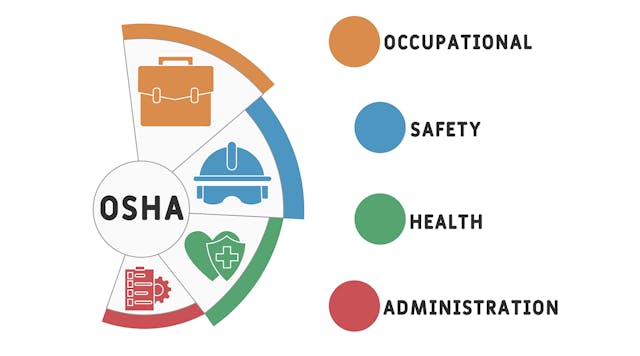On March 1, the EPA announced finalized amendments to the Risk Management Program (RMP). The agency said the goal is to further protect at-risk communities from chemical accidents, especially those located near facilities in industry sectors with high accident rates. It's the latest in a series of regulations from the Biden Administration stressing environmental justice.
EPA said its "Safer Communities by Chemical Accident Prevention Rule” includes protective safety provisions for chemical facilities, requiring measures for prevention, preparedness, and public transparency. The rule requires industry to prevent accidental releases of dangerous chemicals that could otherwise cause deaths and injuries, damage property and the environment, or require surrounding communities to evacuate or shelter-in-place.
The final rule covers all 11,740 regulated RMP facilities across the country and contains more rigorous requirements for a subgroup of facilities that are more accident-prone and pose the greatest risk to communities.
Final amendments to the rule include:
- Requiring a safer technologies and alternatives analysis, and in some cases, implementation of reliable safeguard measures for certain facilities in industry sectors with high accident rates.
- Advancing employee participation, training and opportunities for employee decision-making in facility accident prevention, for example.
- Reiterating the allowance of a partial or complete process shutdown in the event of a potential catastrophic release.
- Implementing a process to allow employees and their representatives to anonymously report specific unaddressed hazards.
- Requiring third-party compliance audits and root cause analysis incident investigation for facilities that have had a prior accident.
- Enhancing facility planning and preparedness efforts to strengthen emergency response by ensuring chemical release information is timely shared with local responders and a community notification system is in place to warn the community of any impending release.
- Emphasizing the requirement for regulated facilities to evaluate risks of natural hazards and climate change, including any associated loss of power.
- Increasing transparency by providing access to RMP facility information for communities nearby.
“Many communities that are vulnerable to chemical accidents are in overburdened and underserved areas of the country,” said EPA Administrator Michael S. Regan, in a statement. “This final rule is a critical piece of the Biden-Harris Administration’s commitment to advancing environmental justice by putting in place stronger safety requirements for industrial facilities and new measures to protect communities from harm.”
However, not everyone views these ammendments the same way. Eric R. Byer, CEO of the Alliance for Chemical Distribution (ACD), formerly the National Association of Chemical Distributors, released the following statement on the final rulemaking:
For years, Risk Management RMP has been a success story, preventing chemical accidents and improving preparedness, environmental stewardship, and community partnerships. ACD members not only play an integral role in the U.S. economy, but also uphold the highest standards of safety and security through their certification in our mandatory Responsible Distribution program.
“One of the rule’s most disturbing aspects is its potential to serve as a roadmap for terrorists aiming to weaponize chemical facilities. Under this rule, regulated facilities must disclose sensitive information to any individual residing, working, or spending significant time within a six-mile radius. The lack of a ‘need to know’ or vetting requirement for information requests will heighten the risk of sensitive chemical information falling into the wrong hands. This is particularly alarming given the expiration of the Chemical Facility Anti-Terrorism Standards program in July 2023, which has already increased vulnerability of chemical operations to terrorist attacks.
In addition, the rule will undoubtedly place additional financial strain on ACD members that are already compliant, particularly at a time when many are financially strained. Rather than imposing complex new requirements that will create additional security concerns and confusion for many businesses, the EPA should dedicate its efforts to noncompliant chemical facilities, ensuring all facilities understand their safety and environmental regulatory obligations. By implementing this final rule, the EPA risks facilities defunding critical and proven mitigation resources to finance these new requirements.
The bottom line is that this rule is completely unnecessary, counterproductive to ensuring the security of our member company facilities and the surrounding communities at those locations. It is yet another example of this Administration’s misguided actions that will result in the shuttering of America’s small businesses instead of incentivizing their growth and expansion. The Alliance wholeheartedly opposes this final rule and will take the necessary steps to continue to fight it.”
On October 31, 2022, ACD submitted comments to the EPA expressing concern with the agency’s proposed changes.
In announcing the changes, EPA said that the final rule includes revisions to improve chemical process safety, to assist in planning, preparing for, and responding to accidents, and to increase public awareness of chemical hazards at regulated sources. The rule requires regulated facilities to perform a safer technologies and alternatives analysis, and in some cases, facilities will be required to implement reliable safeguard measures as practicable. This new requirement is expected to reduce the frequency and severity of accidents.
The EPA sites the example, in 2019, of an explosion and fire at the TPC Group in Port Neches, Texas, which resulted in the largest number of evacuees in history (50,000 people), as well as $153 million in offsite property damage. The EPA noted that had the provisions in the new regulation been in effect prior to the TPC Group accident, the facility would have been required to perform a safer technologies and alternatives analysis and implement at least one safeguard measure, which may have mitigated or prevented the accident from occurring.
EPA estimates that accidental releases from RMP facilities cost society more than $540 million each year. There are approximately 131 million people living within three miles of RMP facilities, of which approximately 20 million identify as Black or African American, 32 million identify as Hispanic or Latino, and 44 million earn less than or equal to twice the poverty level, according to the EPA.
The rule also includes provisions such as empowering workers in safety decisions and increasing access to RMP facility information for communities living and working in the surrounding areas.
Read more information on the rule at EPA’s Risk Management Program rule website.





































































